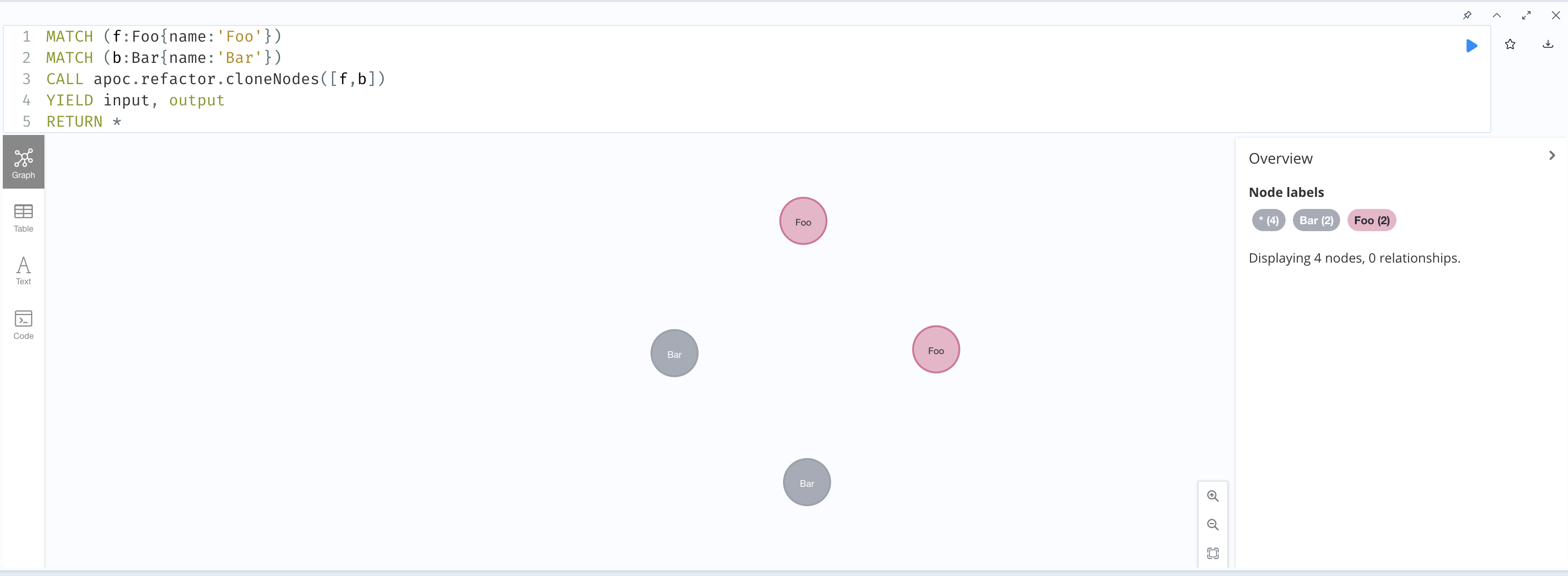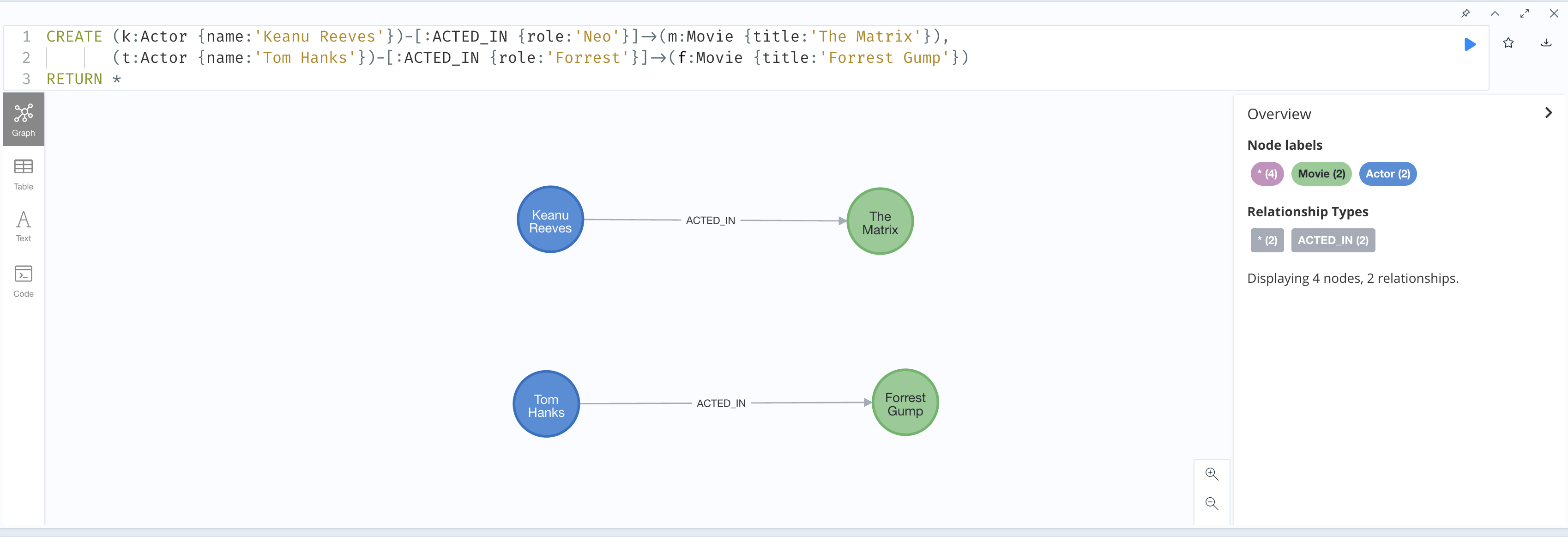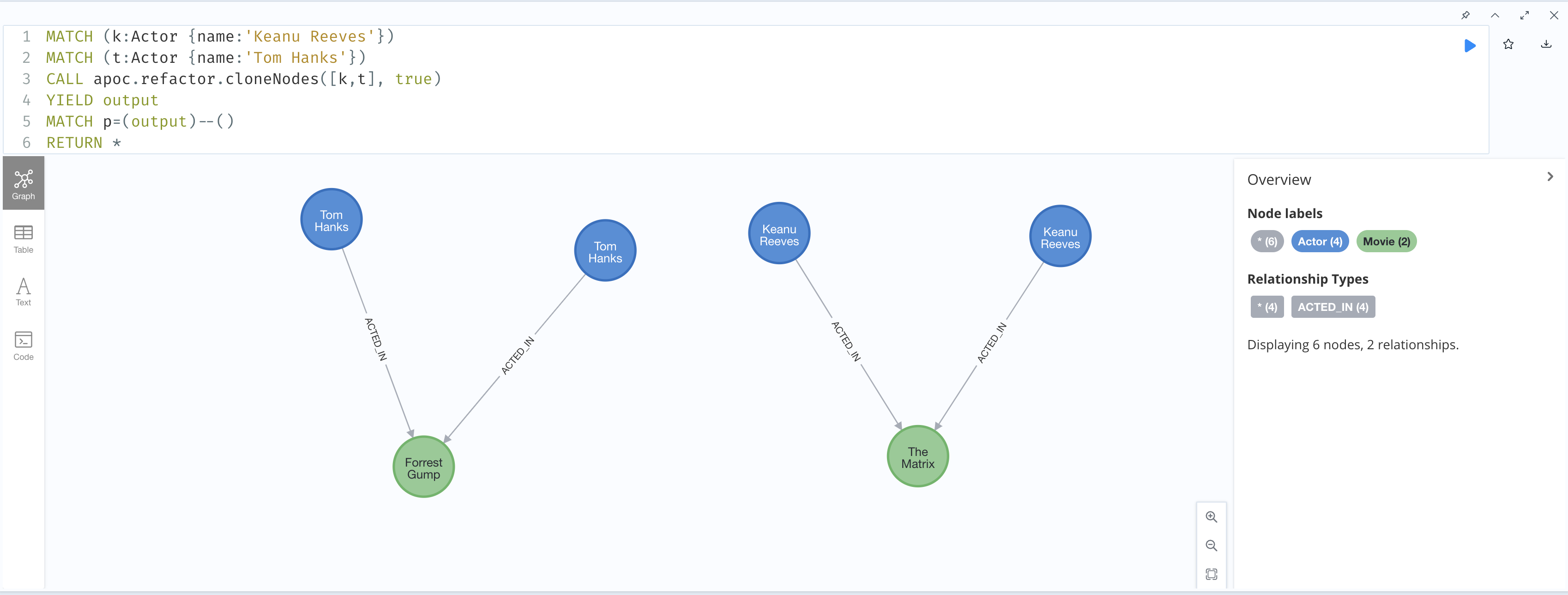Clone nodes
The available procedures are described in the table below:
| Qualified Name | Type | Release |
|---|---|---|
|
|
|
|
apoc.refactor.cloneNodesWithRelationships
|
|
|
The apoc.refactor.cloneNodesWithRelationships(<nodes>) has been deprecated in favor of apoc.refactor.cloneNodes(<nodes>, true).
|
Example Usage
The examples below will help us learn how to use these procedures.
Clone nodes only
CREATE (f:Foo{name:'Foo'}),(b:Bar{name:'Bar'})
MATCH (f:Foo{name:'Foo'}),(b:Bar{name:'Bar'})
CALL apoc.refactor.cloneNodes([f,b])
YIELD input, output, error
RETURN *where input is the source node id, output is the node cloned and error is the possible error message.
If we execute this query, it will result in the following graph:

In case of an error, the message will be thrown in the error result, for example with this constraint:
CREATE CONSTRAINT ON (n:UniqueLabel) ASSERT n.key IS UNIQUEWe can create this node:
CREATE (:UniqueLabel {key: 1})and then we can execute:
MATCH (n:UniqueLabel) WITH n
CALL apoc.refactor.cloneNodes([n])
YIELD error, output
RETURN error, outputgetting as a result:
| error |
|---|
output |
"Node(<NNN>) already exists with label `UniqueLabel` and property `key` = 1" |
null |
Clone nodes with relationships
Actor connected with other two different node of type MovieCREATE (k:Actor {name:'Keanu Reeves'})-[:ACTED_IN {role:'Neo'}]->(m:Movie {title:'The Matrix'}),
(t:Actor {name:'Tom Hanks'})-[:ACTED_IN {role:'Forrest'}]->(f:Movie {title:'Forrest Gump'})
RETURN *
MATCH (k:Actor {name:'Keanu Reeves'})
MATCH (t:Actor {name:'Tom Hanks'})
CALL apoc.refactor.cloneNodes([k,t], true)
YIELD output
MATCH p=(output)--()
RETURN *As result we have a copy of the nodes and relationships

Clone nodes skipping properties
We can clone nodes excluding some properties, by specifying the `propertyKey`s list as the third parameter For example, with this node:
CREATE (f:Foo{name:'Bar', surname: 'Baz', age: 66})we can execute:
MATCH (n:Foo)
CALL apoc.refactor.cloneNodes([n], false, ["age"])
YIELD output
RETURN properties(output) AS props| props |
|---|
{ "surname": "Baz", "name": "Bar" } |